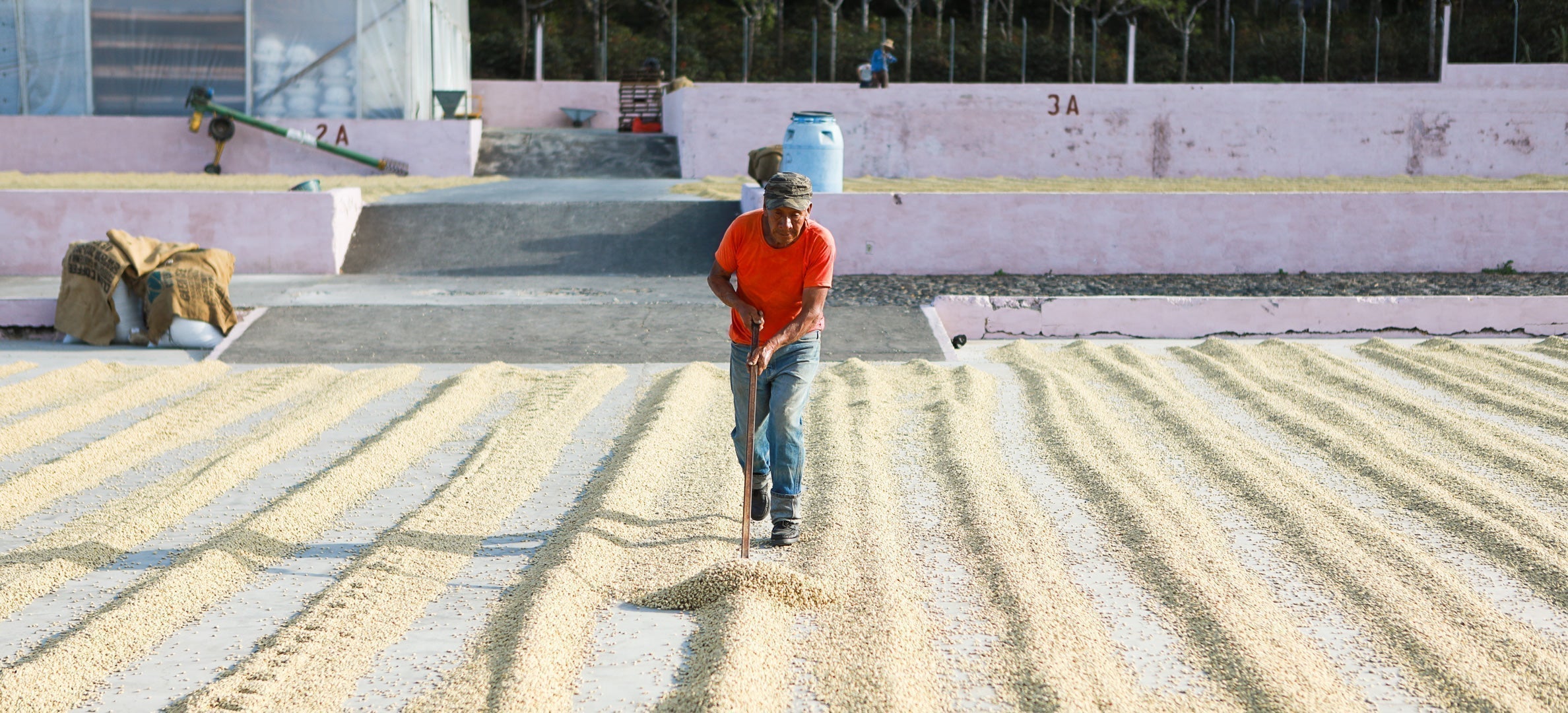WHAT IS COFFEE PROCESSING?

Ever wondered what we mean when we say a coffee is “washed”? What about when a coffee bag label says “Natural Process”?
When we think of items as being processed, we may have ideas of methods or ingredients imparted on those items to make them consumable. Imagine spinach for example. Just like spinach can be consumed as is, spinach can also undergo processing to be sold frozen or canned. Not unlike other consumable groceries, coffee undergoes processing to change the original coffee cherry to consumable coffee beans.

To put it simply: when a harvested coffee cherry is processed, the cherry is transformed into the green, unroasted coffee beans we receive at our roastery from exporters. How they go from cherry to green coffee beans is a matter of varying techniques and methods, otherwise known as processing methods.
There are many ways to process a coffee cherry. The way in which the coffee cherry is processed depends on factors such as the region the cherry is grown and harvested in, availability of natural resources like water, and financial costs. Different methods of processing coffee cherries also result in different characteristics in the final coffee.
At Madcap our philosophy has revolved around sourcing clean, crisp, expressive coffees that showcase a snapshot of their terroir, processing method, and producer practices.This is the reason that a majority of the coffees we bring in throughout the year are washed process coffees, and any other processing method are thoughtfully selected. That being said, we do offer a few natural processed coffees and anaerobically processed coffees each year.
So what does it mean when a coffee has been washed, natural, or anaerobically processed?
WASHED

Also known as wet process, the washed processing method involves removing the fruit or cherry from the coffee beans completely before washing and then drying the coffee beans.
First, the outer layer of fruit is removed from the cherry by a machine called a de-pulper. Then, in an effort to remove the thin and sticky remaining layer of the fruit called the mucilage, the beans sit in a tank to soak in fresh water tanks for around 12-72 hours. After this period of soaking, the beans are rinsed thoroughly. Finally, the beans are spread on raised beds or concrete patios for 10-15 days to dry in the sun, being agitated regularly to ensure even drying and avoiding mold. Washed process is commonly used in African and Latin American countries.
Washed processed coffees tend to have clear tasting notes and a clean finish. In a washed process coffee, factors like terroir, elevation, soil characteristics and agricultural techniques are on full display in the final cup of coffee. It is for this reason that we gravitate toward mainly washed processed coffees at Madcap.

NATURAL
Also known as dry process, involves drying the coffee beans with the cherry left on the beans. The cherries are spread out to dry on concrete patios, raised beds, or special drying tables for anywhere from 2 to 3 weeks. During this time, the drying cherry ferments, and the sugars in the fruit begin to impart vibrant flavor on the coffee beans. After the cherries reach about 10-12% humidity, the cherries are taken to a dry mill to remove the fruit from the coffee beans. Not only does this method use far less water, it can result in a sweeter, more fruit-forward flavor on the finished coffee as compared to a washed coffee. Naturally processed coffees tend to have more complex tropical fruit characteristics and berry-like acidity compared to washed coffees.



In 2024, our team contracted a few naturally processed coffees, such as Elefante Natural from El Salvador, Finca Santa Cruz from Mexico, and Heleanna from Ethiopia. One of our most anticipated coffee releases each year is Party, which is always a naturally processed coffee from Ethiopia. When selecting a coffee to represent Party, our sourcing team looks for a coffee with loud, pink fruit tasting notes and a clean finish.
ANAEROBIC

Anaerobic means “without oxygen.” Anaerobic process requires the coffee to ferment inside of oxygen-free tanks. The cherries can be whole, or already de-pulped with the mucilage left on. The coffee will ferment in this oxygen free environment from anywhere to 40-200 hours, followed by being either rinsed and dried (washed) or dried with the fruit on (natural). During the coffee’s time inside the tanks, bacteria and yeast work together to convert sugars present in the fruit into alcohol. The longer the coffee ferments in the tanks, the more the processing will impact the taste of the final cup. This method of processing can impart fragrant and fruity, and sometimes wine-like qualities on the finished coffee. Oftentimes, anaerobic processed coffees can have layers of complexity, vibrant flavors, and occasionally funky characteristics.
Although we tend to seek out washed coffees for the sake of cup clarity, we do have delicious anaerobically processed coffees on our menu from time to time. One example is Nelson Moreno, whose coffee is aromatic, minimally funky, and impressively clean, and is a great example of how anaerobic processing can amplify a coffee's expressive tasting notes without sacrificing clarity.
-
Posted in
Coffee, Processing, Producer




